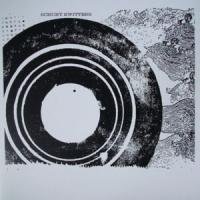
Jammed it long and hard with my bros last night. Interrupted by a flight cancellation phone call which resulted in my flight being rescheduled to later in the day. Needless to say, the long, hard jamming resumed. On the plane to Chicago now. From there I'll continue westward to Portland for a little over a week. Really looking forward to picking up some music there.
Lots of new stuff to review. Things have been pretty crunchy lately with the end of term here at the ol' skool. TIme to get back to it:
The first up is a relatively new tape from Keith Fullerton Whitman, synthhead extraordinaire, experimental & electronic music encyclopedia, and founder of
Mimaroglu Music a vast resource of interesting music and non-music alike with one of the nicest merchant websites around. "Generator" is a selection of seven pieces recorded and composed last fall with Whitman's unique hybrid analogue/ digital modular synthesizer system.
"I have long been obsessed with the tenets of Process music & Systems music. These 'Generator' pieces all stem from a desire to produce an 'automatic' variant, with little in the way of 'performance' and/or any sort of mid-stream composer/ performer intervention." - Writes Keith in the blurb inside the tape.
I too have long been intrigued by the possibilities inherent in the Process music and System music credos. Actually I have been thinking about it a lot lately. I have been dreaming about systems that reach a certain level of internal complexity (a bunch of things all modulating, triggering, constraining each other) such that they grow and shift in ways that are utterly impossible to predict ahead of time (as in too many possible outcomes to even generate a list of probabilities). "Machine Music" as Keith calls it. Or labeled otherwise: "Frankenstein Music".
This tape is very exciting. Right away (with "Generator 1") we are placed in modular cruise nowhere mode. Hot and cold layers together - mixed up in a bubbling brew of syntha-fresca. Super fresca. I can't help being reminded of the first time that I listened to 'Music for 18 Musicians'. Whitman's constructions definitely evoke the cascading repetitiousness of minimalist composers like Reich, but his vibe is decidedly one-guy-in-a-room-full-of-music-machine. It is stripped back-er, genuinely spontaneous, much more unpredictable than those guys. He is working with much less actually. At times the frequency variation is closer to the micro-tonal mappings of Percy Grainger than the tight, yet expansive gushings of Reich or Glass. All of this is to say that his sound comes just as much (if not more)(yeah definitely more) from the academic computer science legacy(s) than the minimalist composer set.
The second side opens onto an impossibly pure-toned panning and half cycle exercise. The sounds here come across as inevitable, the variations necessary. It sounds like circuit therapy - the oscillators are working through some serious drama. But in the end, the particulars drift away and the send-recieve-send-receive message becomes transcendent. There is no hesitation here; no forced significance. This stuff just sort of grows from the deep end of a neglected swimming pool somewhere in Somerville or Newton. Hypnosis sets in quickly on this side and Morpheus rules with an iron fist. There is no making sense of what is going on; we are in zoner-ville now and it is very difficult to escape.
The blissful tone juggling does get subverted at certain moments along the way though. As Keith explains in the notes, the incidental sounds of preparations and alterations (patching etc...) have been intentionally left in. Instead of thinking of these as mistakes, Whitman embraces their quality and the connotations ("ad-hoc 'Acid' jam session") that they bring along. It is hard to place, but I suppose that this element assures me that this is not a closed system; there is in fact a man behind the curtain. ...But what distinguishes him from Oz is that Keith Fullerton Whitman is a real wizard. Only a man of magic could coax such precise and confused progressions (more like neurotic ruminations) out of a few dusty old boxes.
It is a subtle satisfaction that comes from hearing a side track or a crack in something that is (on the face of it) relatively procedural. The world of science music is usually very clean, often austere, and unfortunately often overworked. The world of 'psychedelic jam-town' - as we all know - is usually pretty under-worked, but nevertheless often expansive, emergent, and cosmic man! Perhaps one of the most enjoyable attributes of psychedelic music though, is how little there is at stake. It's easy listening chillers 1972. Take me to the valley bro. And then take some time offfffffffffffffffffffffffffff.
I don't know if meditating on these modular tunes will elevate you to a higher mind state, but you might end up meditating on the singularity that is really fucking near. This tape is nothing less than a record of the emergence of a new super-communicative species; with an ability to talk with and understand its fellow units like none before it. What if we take seriously the idea that this is music for machines? After looping it through on headphones a couple of times I am beginning to feel pretty damn programmed. But I am also in an airplane which probably doesn't help.
Smooth, rich synth lines, percussive electric sounds, spare textures and effects that seem to have leaked out somehow and sketch and dance throughout the rest of the sonic environment (which is nothing short of flocks of birds or schools of fish interacting. And then there are these wonderful excursions, after you have lost track, that take you across the land and into the old world "blow-the-battle-horn!" style. The bubbling pulse kicks it low-key-low in the mix, while these wonderfully pleasing long, triumphant tones ring out on top. Not to mention the empty parking lot jam in there. Pretty empty at one point. Overall a super tight tape. Perfect cover too.








